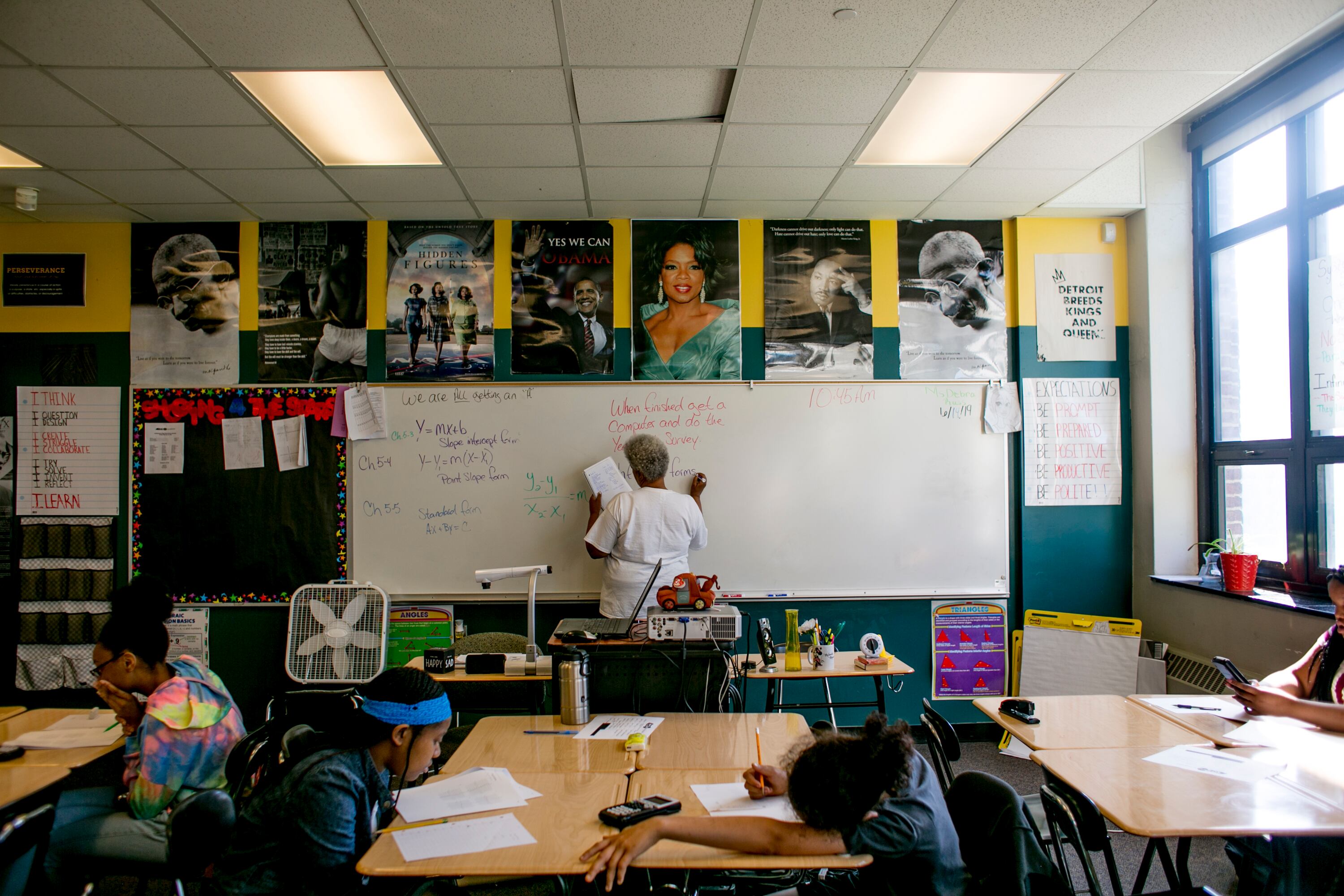In report after report, experts have sounded alarms about the large number of teachers leaving Michigan schools.
When Chalkbeat obtained a trove of data about the teacher workforce in Michigan, we saw an opportunity to tell the stories of the humans behind the numbers.
To do so, we dug through nearly a million rows of data and spoke with more than two dozen teachers, students, and researchers. Here’s a closer look at our reporting process.
Want to double check our work? We’ve included more technical information and code at the bottom of the page.
What is teacher turnover, anyway?
Turnover is the percentage of teachers who leave during a given year. Teachers who leave might go to another school or district, or they might leave the classroom entirely.
Turnover, as it appears in most state reports, is measured from fall to fall. In this case, a teacher turnover rate of 50% at a given school would mean that half of teachers left the school between the beginning of the school year and the next fall. This includes teachers who changed schools during the summer.
To capture midyear turnover, which research suggests is especially detrimental to students, we calculated the percentage of teachers who left between the fall and the following spring.
Who is represented in the data?
Teachers who were assigned to a classroom in Michigan. This includes long-term substitutes, librarians, career and technical education teachers, and school counselors who were assigned to teach classes.
We did not include teachers who taught in multiple districts schools since accounting for their moves would be extremely difficult. These teachers were about 2% of all teachers, and they tended to be specialists, such as music teachers, or to teach in cyber schools.
Teachers who left due to school closures are included in the data and our analysis. We considered removing them from our analysis, but opted not to because closures are significant experiences for the teachers in question and because leaving them in didn’t substantially change our findings. About 1% of Michigan schools closed in 2019. While several Detroit charter schools closed that year, eliminating school closures from our calculations would have reduced the turnover rate for Detroit charters by just over 1%.
What did we learn from the database?
The data gave us a more detailed picture of turnover than current data published by the state. The database helped us answer questions like:
- How many teachers left their schools midyear?
- How many teachers remained at a given school throughout a five-year period?
- How many teachers left the profession between the fall of 2019 and the fall of 2020, after the pandemic closed schools across the state?
- How many students attended schools with high turnover?
- What are the demographics of students who attend the schools that teachers are most likely to leave?
How much teacher turnover is too much?
The most recent national teacher turnover rate we could find was 16%, a figure that dates to 2012.
Over the last 15 years in Michigan, the turnover rate has typically been between two and four points higher than that.
In Michigan cities, the rate is substantially higher, often exceeding 30%, according to our analysis of teacher certification data.
Some turnover is normal, even healthy. But experts we spoke with mostly said that 20% to 25% turnover should be considered problematic.
To calculate the number of students enrolled in high turnover schools, we defined “high turnover” as 30%.
Where did the data come from?
The state keeps extensive records on teachers, which are housed by the Michigan Department of Education and Michigan’s school data provider, the Center for Education Performance and Information.
Chalkbeat obtained records of teachers who were assigned to any classroom in the state between 2015 and 2020 by submitting multiple requests through the Freedom of Information Act to the Michigan Department of Education.
The database is based on teachers who were assigned to classrooms in the Registry of Educational Personnel, which is maintained by the Center for Educational Information and Performance, Michigan’s education data provider. The data includes people with teaching certifications and substitutes or licensed school counselors who are leading classrooms.
As part of the request, we asked the department to create a unique identification number for each teacher. (These were different from the unique IDs that the state assigns to every teacher, which are an important part of their personnel files.) This allowed us to track and visualize the movement of teachers over time, which hasn’t been done before by a news outlet in Michigan.
Separately, Chalkbeat obtained a list of schools with teacher turnover rates calculated by the state. This allowed us to check our work with the other data. We also used this list to figure out how many students attend schools with high teacher turnover.
How did you calculate the number of students attending high turnover schools?
A key question we wanted to answer was: Which students attend the schools with the highest teacher turnover?
To find an answer, we used a state database that contains teacher turnover rates over several years for every school in the state. It’s the same data contained in the state’s online parent dashboard.
Turnover rates from that database are available through 2018-19. First, we linked the turnover data with school enrollment data from the same year. Then we added up enrollments for subgroups, such as English learners, Black students, and students from low-income families, in schools with turnover rates of 30% or higher.
The state only provided turnover rates for school buildings. To find rates for cities and charter schools, we did our own calculations using teacher certification data.







